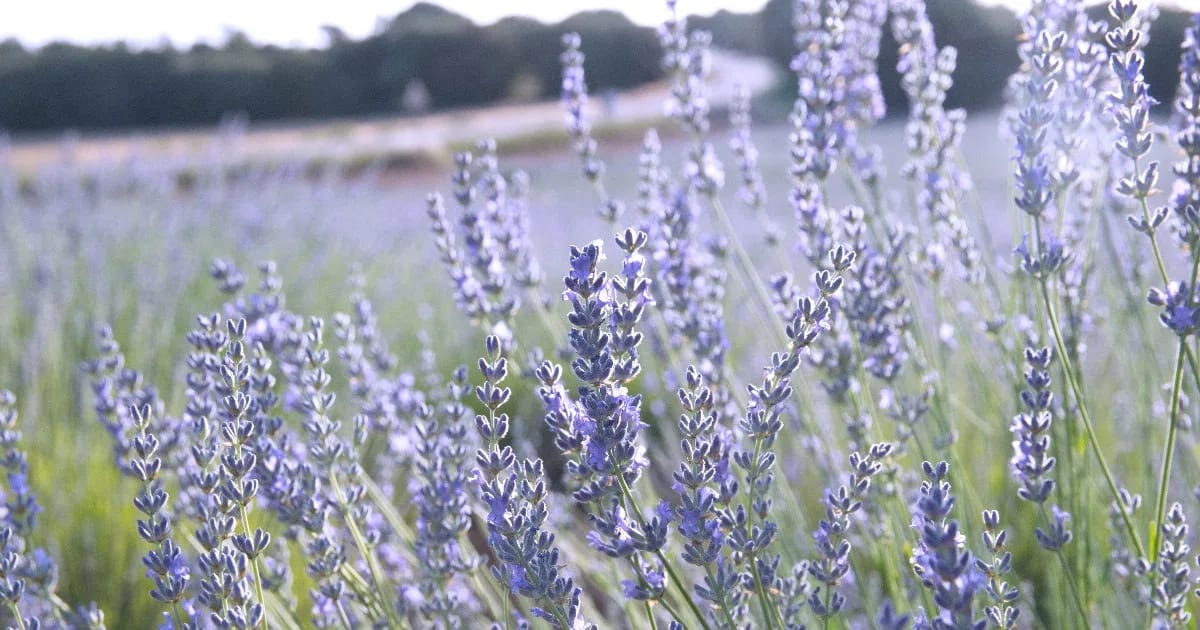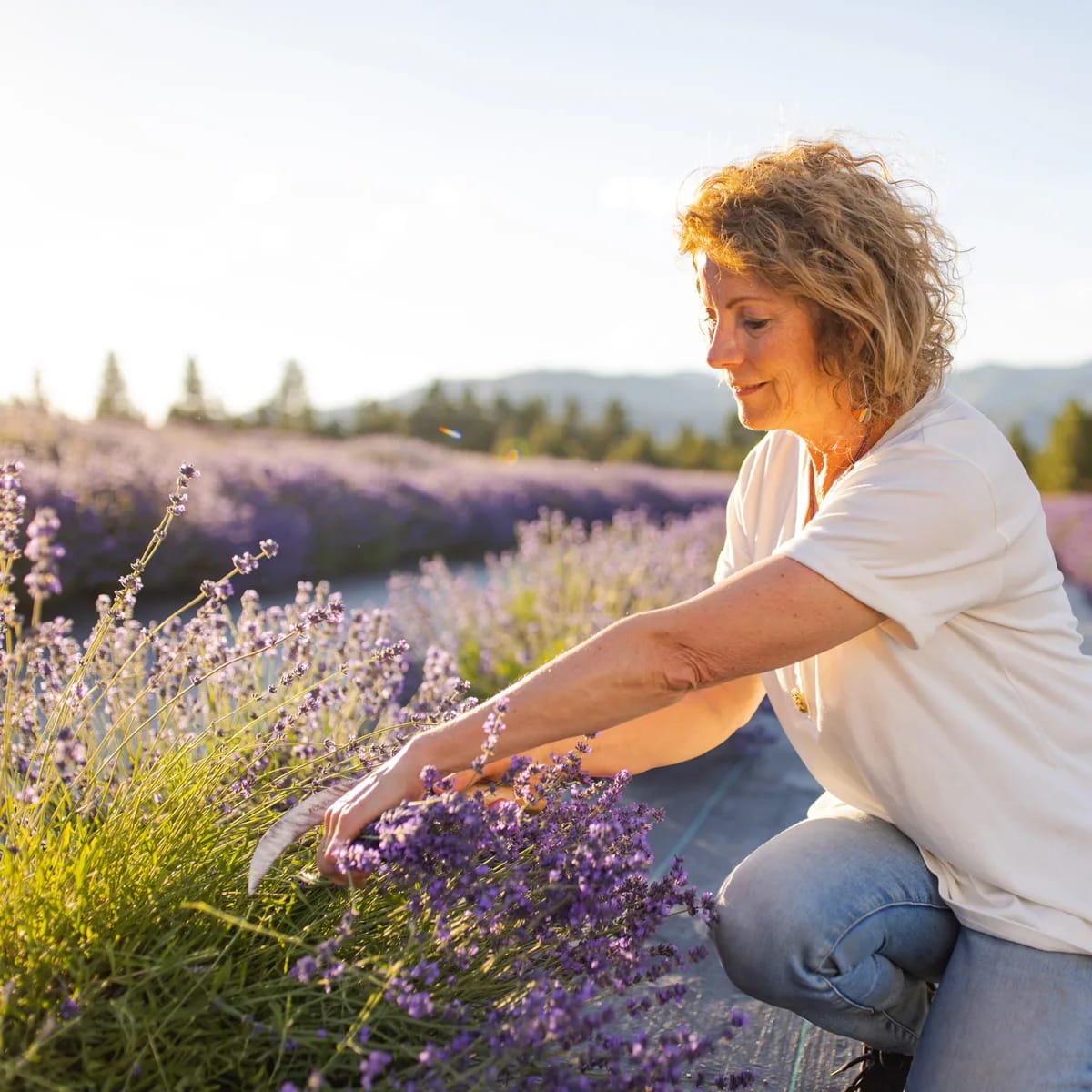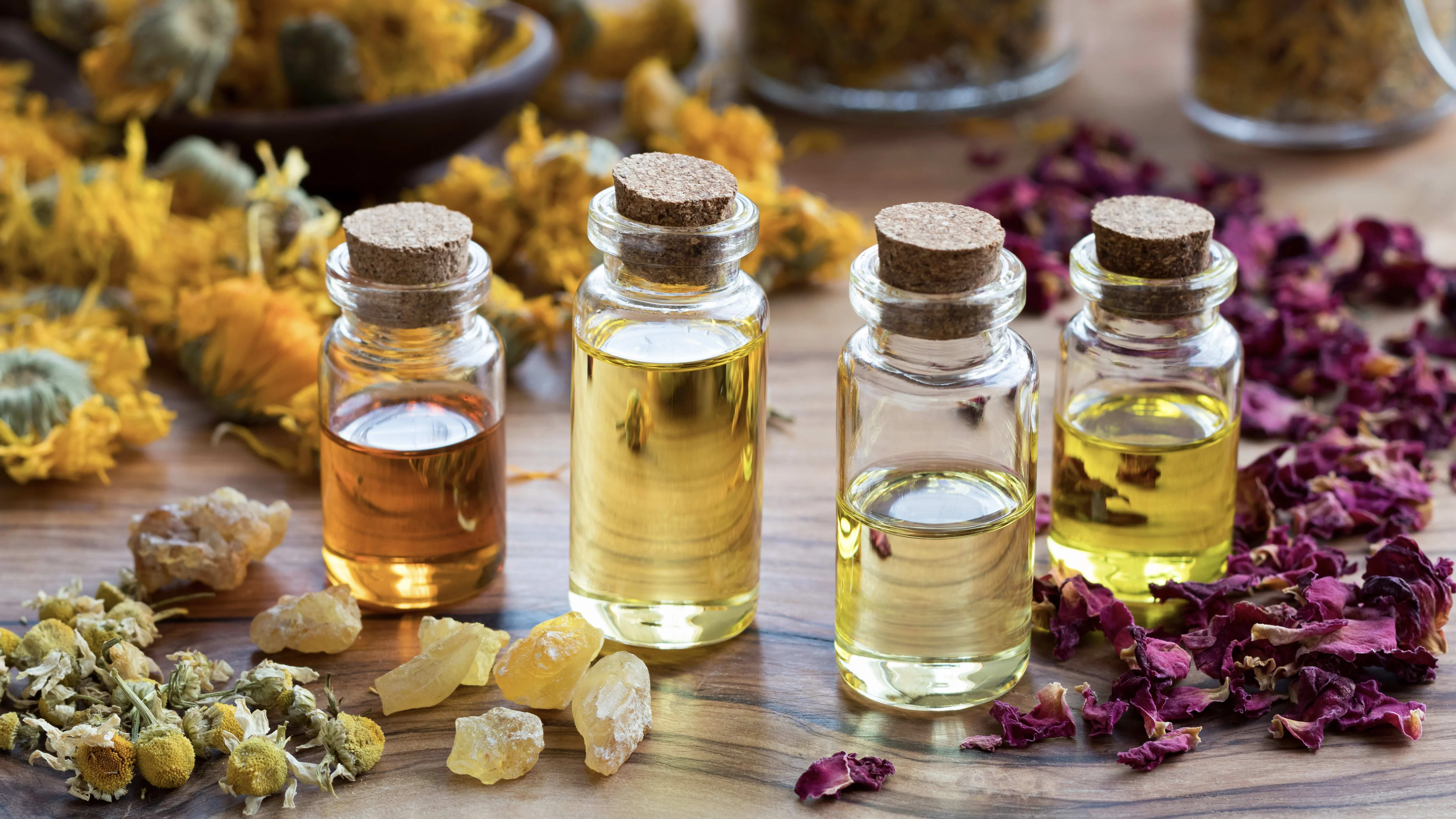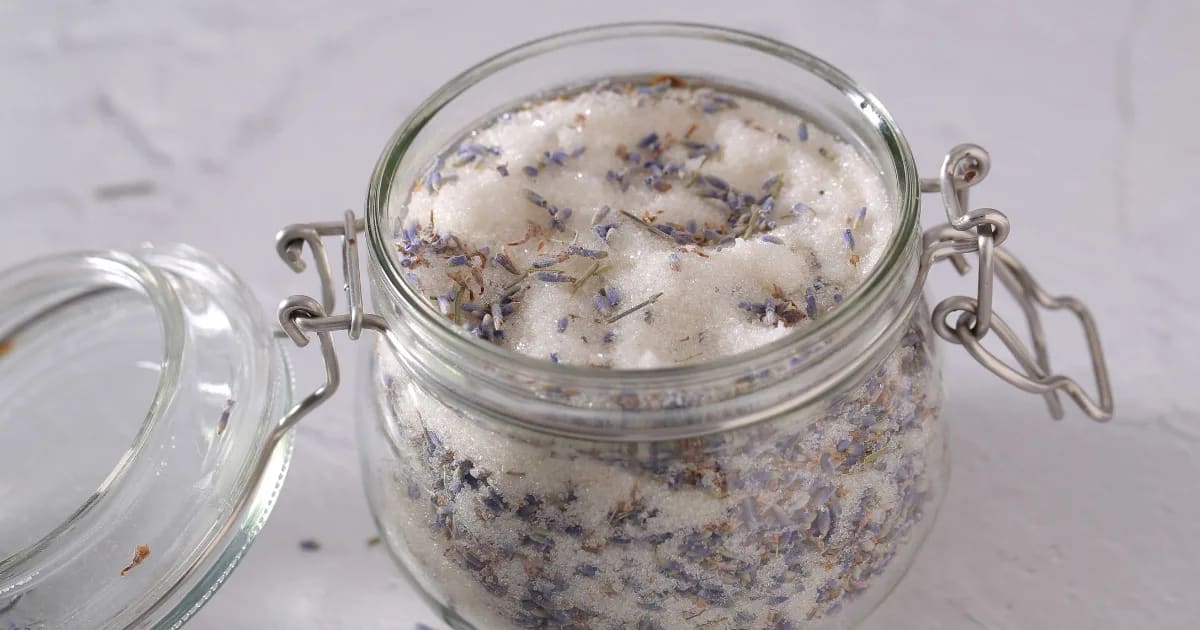Often Overlooked Uses for Lavender Essential Oil

Lavender Essential Oil is a Must-Have!
Lavender essential oil (Lavandula angustifolia) is probably the most famous oil in the aromatherapy world! Most people love the aroma of lavender, and its most popular benefits have been well-researched.
We have mountains of proof that lavender essential oil can:
Relax the nervous system
Calm stress
Support sleep
Help repair damaged skin
Lavender is so powerful and versatile that it’s a must-have for any essential oil collection! But even a lot of people who love lavender aren’t aware of just how many uses it has.
Let’s explore some often-overlooked ways to use lavender. By the end of this post, you’ll understand why so many people consider lavender oil a staple in their natural care collections—and you’ll have new ways to use it yourself. You’ll be able to get every last drop of goodness out of that little bottle of lavender!
You’ll also learn about spike lavender (Lavandula latifolia), a less well-known species of this popular plant. It has a completely different personality and some surprising benefits!
Uncommon Ways to Use Lavender Essential Oil
First, let’s focus on true lavender (Lavandula angustifolia).
Lavender (Lavandula angustifolia)
This is the oil most people think of when we say “lavender.”
Lavender’s benefits are largely due to its two main components, linalool and linalyl acetate.
These two components have been individually researched. We know they offer the four benefits we shared above (calming stress, relaxing the nervous system, supporting sleep, and nourishing skin). But their talents don’t stop there! Here are some benefits of true lavender that often go overlooked.
Natural Pain Relief
You might already be aware of this one! Multiple studies on both humans and animals have shown time and again that lavender can help calm inflammation. Since inflammation and pain are connected, reducing inflammation leads to pain relief.
Lavender (and linalool and linalyl acetate) can calm a LOT of different types of pain, including:
Stings and bites
Cuts and scrapes
Burns
A sore, stiff neck
Post-operative pain
Menstrual cramps
Muscle and joints
Headaches
Swelling
Irritated, painful skin conditions
Short-term, acute issues
Chronic, ongoing issues
Try inhaling it for a headache—or even if you have a cold with sinus pain! (Some colds, flu, and breathing issues are accompanied by inflammation in the respiratory tract. We’ll talk more about that in a moment!)
Lavender is also useful when applied topically directly over the area that’s inflamed. Just be sure to dilute your essential oil safely!
Respiratory Support
Lavender’s ability to calm inflammation extends to the respiratory system.
When there’s inflammation in your nose and sinuses—maybe from allergies, a cold, or the flu—lavender can soothe the discomfort and reduce the inflammation itself. This can reduce mucus production and ease pain.
In The Complete Guide to Aromatherapy (Third Edition, Vol 1), Salvatore Battaglia mentions a study done on bronchial asthma in mice. Lavender reduced airway resistance, meaning it made it easier for the mice to breathe normally. But that’s not all:
Furthermore, the lavender group showed lower interleukin and cytokine levels in the lung tissues. The authors [of the study] concluded that lavender may be useful as an alternative medicine for bronchial asthma.
Interleukins and cytokines are substances that the immune system creates to deal with invaders. When they appeared in low levels, it meant the immune system didn’t have to defend the lungs too much. That’s a good thing!
For respiratory support, use lavender throughout the day as needed . . . but (as you might imagine), it’s especially comforting at night! Try breathing with a lavender inhaler, diffusing it, using room sprays, and applying it to your skin in body oil, butter, or lotion.
Antimicrobial
Lavender has antimicrobial effects against some bacteria and fungi. And the component linalool has also shown some antiviral activity.
In these studies, lavender is often tested alongside other essential oils. Salvatore Battaglia (The Complete Guide to Aromatherapy, Third Edition, Vol 1), says:
. . . Studies have confirmed that when lavender was blended with other essential oils, the antimicrobial activity was enhanced. The authors [of the study] concluded that L. angustifolia in combination with Citrus sinensis [sweet orange] demonstrated the best antimicrobial effects.
Include lavender in your natural cleaning blends or diffuse it to reduce germs in your home. You can apply it topically if you’re experiencing an irritating fungal issue. (It feels soothing on feet, especially combined with tea tree!)
Digestion, Nausea & Belly Cramps
Lavender’s ability to calm muscle spasms makes it surprisingly effective for an upset stomach!
Linalool and linalyl acetate can both relax smooth muscle, explaining lavender’s ability to ease indigestion. Since they also calm pain and relax muscle tension, it makes sense that lavender is so comforting for belly cramps. A lot of women turn to lavender during their periods (especially combined with clary sage oil, Salvia sclarea).
You can also use lavender to relieve nausea. Simply inhaling lavender can have a profound effect for soothing your stomach. Or you can make a belly rub to absorb its benefits over a longer period of time.
Immune Support
We know stress is bad for our health—including our immune response.
Since lavender is such a potent stress reliever, you can make it a key part of your natural immune support routine. Lavender helps reduce stress hormones, decrease overall inflammation (which weakens the body and makes it more open to invaders), and helps you get a good night’s rest—when important healing processes take place to strengthen your body.
But stress is bad for us on multiple levels. It doesn’t just lower immunity.
Stress can also affect heart health, mental health, and more.
Using lavender regularly acts as a “tonic” that helps your body stay balanced at peak health.
Spike Lavender: An Energizing Lavender Species!
Now let’s talk about a species of lavender you might be less familiar with. Spike lavender is indeed part of the Lavandula genus, but its species is latifolia.
Lavandula latifolia is very different from Lavandula angustifolia!
Spike Lavender (Lavandula latifolia)
While spike lavender does contain a high percentage of linalool, it doesn’t contain much linalyl acetate. Instead, it’s rich in 1,8-cineole, a component that gives it a fresh, penetrating scent (similar to Eucalyptus globulus). One whiff can clear your head! Authors Purchon and Cantele (The Complete Aromatherapy & Essential Oils Handbook for Everyday Wellness) describe it this way:
Spike lavender has a more medicinal scent because of its chemical composition. It is slightly harsh and camphoraceous but pleasant, as it still retains much of its lavender aroma.
1,8-cineole makes spike lavender energizing instead of relaxing!
Yep—this species of lavender actually makes you feel more awake and alert!
Studies show that the presence of 1,8-cineole in the bloodstream corresponds to sharper cognitive performance, mental alertness, and a more energized mood.
You might want to use spike lavender during the day and true lavender at night.
Natural Pain Relief
Just like true lavender, spike lavender calms inflammation!
But 1,8-cineole is a little harsher than linalyl acetate, so we don’t suggest it for sensitive skin or tender issues like cuts or scrapes. 1,8-cineole’s slight cooling effect can feel super comforting for bug bites and stings, though! (Just make sure the skin isn’t broken when you apply it in a topical blend.)
Stings and bites
A sore, stiff neck
Menstrual cramps
Muscle and joints
Headaches
Swelling
Short-term, acute issues
We especially love using spike lavender for headaches and for muscles and joints.
If you push your workout a little too far and get a cramp or knots of tension, massage the area with cooling spike lavender. It’ll untangle those knots in no time!
Respiratory Support
While true lavender supports respiratory health by calming inflammation, spike lavender adds a more direct effect: it’s a decongestant!
Spike lavender calms inflammation in your nose, sinuses, and respiratory tract, and its penetrating scent breaks up mucus. And because it also sharpens mental focus, it’s a wonderful ally if you feel under the weather but still have to complete a project.
Use spike lavender in an inhaler, diffuser, or room spray when you’re overcoming a respiratory issue. Just be sure to keep some tissues nearby so you can finally clear out your stuffy nose!
Antimicrobial
1,8-cineole is an excellent antimicrobial! Salvatore Battaglia writes:
In vitro study found that spike lavender oil displayed antibacterial effects against 19 out of 25 different bacterial species and 12 out of 20 Listeria monocytogenes.
Those are incredible results! And that was just one of many studies done on 1,8-cineole’s germ-busting benefits. It also has impressive antifungal activity.
Use it for natural cleaning recipes and air-purifying diffuser blends. If you have to choose between which lavender to clean with, we’d go with spike lavender. 1,8-cineole is generally more impressive for clearing germs.
Immune Support
Because of spike lavender’s antimicrobial properties, and its ability to calm inflammation, it’s useful for supporting immune health.
It doesn’t relax the nervous system the way true lavender does, but it can boost immunity by reducing your exposure to germs, helping your body stay inflammation-free, and keeping your respiratory system healthy.

Lavender and its Remarkable Versatility Explored
References
Buchbauer, G., Jirovetz, L., Jager, W., Plank, C. and Dietrich, H. (1993) Fragrance compounds and essential oils with sedative effects upon inhalation. Journal of Pharmaceutical Sciences 82, 6, 660-664.
Chughtai, A., Navaee, M., Alijanvand, M. H., & Yaghoubinia, F. (2018). Comparing the Effect of Aromatherapy With Essential Oils of Rosa damascena and Lavender Alone and in Combination on Severity of Pain in the First Phase of Labor in Primiparous Women. Crescent Journal of Medical and Biological Sciences, 5(4), 312-319.
D’auria, F. D., Tecca, M., Strippoli, V., Salvatore, G., Battinelli, L., & Mazzanti, G. (2005). Antifungal activity of Lavandula angustifolia essential oil against Candida albicans yeast and mycelial form. Medical mycology, 43(5), 391-396.
Edwards-Jones, V., Buck, R., Shawcross S.G., Dawson, M.M. and Dunn, K. (2004) The effect of essential oils on methicillin-resistant Staphylococcus aureus using a dressing model. Burns 30, 8, 772-777.
Hadi, N., & Hanid, A. A. (2011). Lavender essence for post-cesarean pain. Pakistan Journal of Biological Sciences, 14(11), 664.
Karaman, S., Karaman, T., Tapar, H., Dogru, S., & Suren, M. (2019). A randomized placebo-controlled study of aromatherapy for the treatment of postoperative nausea and vomiting. Complementary therapies in medicine, 42, 417-421.
Kim, M. J., Nam, E. S., & Paik, S. I. (2005). [The effects of aromatherapy on pain, depression, and life satisfaction of arthritis patients]. Taehan Kanho Hakhoe Chi, 35(1), 186-194.
Kim, H.M. and Cho, S.H. (1999) Lavender oil inhibits immediate-type allergic reaction in mice and rats. Journal of Pharmacy and Pharmacology 51, 221-226.
Mahumane, G. D., van Vuuren, S. F., Kamatou, G., Sandasi, M., & Viljoen, A. M. (2016). Chemical composition and antimicrobial activity of Eucalyptus radiata leaf essential oil, sampled over a year. Journal of Essential Oil Research, 1-14.
Moss, M., & Oliver, L. (2012). Plasma 1,8-cineole correlates with cognitive performance following exposure to rosemary essential oil aroma. Therapeutic advances in psychopharmacology, 2(3), 103–113. https://doi.org/10.1177/2045125312436573
Peanna, A.T., D’Aquila, P.S., Panin, F., Serra, G., Pippia, P. and Moretti, M.D. (2002) Anti-inflammatory activity of linalool and linalyl acetate constituents of essential oils. Phytomedicine 9, 721-726.
Santos FA, Rao VS (2000) Antiinflammatory and antinociceptive effects of 1,8-cineole a terpenoid oxide present in many plant essential oils. Phytotherapy Research 14:240-244.
Sasannejad, P., Saeedi, M., Shoeibi, A., Gorji, A., Abbasi, M., & Foroughipour, M. (2012). Lavender essential oil in the treatment of migraine headache: a placebo-controlled clinical trial. European neurology, 67(5), 288-291.
Tang, S. K., & Tse, M. Y. (2014). Aromatherapy: does it help to relieve pain, depression, anxiety, and stress in community-dwelling older persons?. BioMed research international, 2014.





